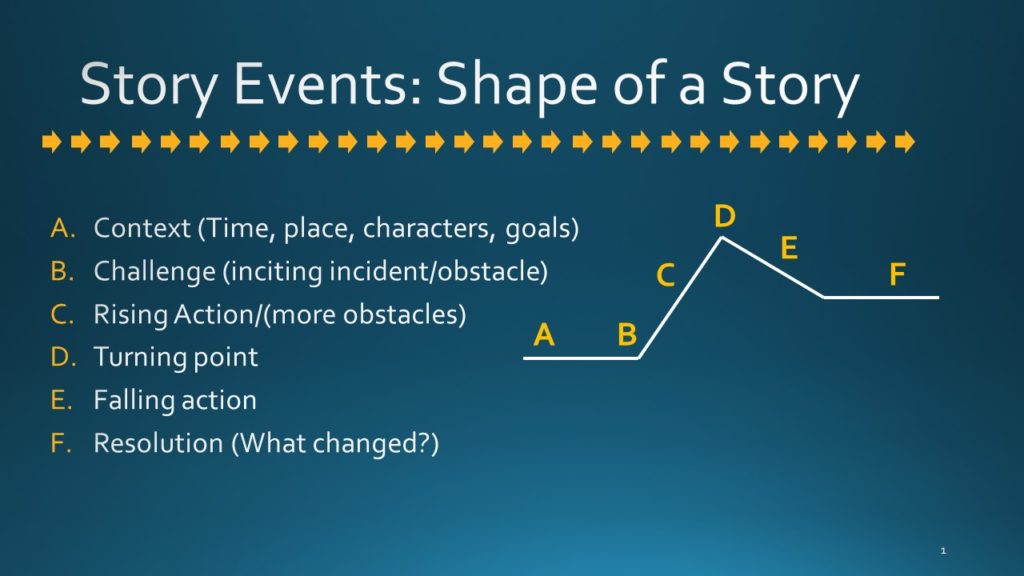When you tell a story, you want to engage your audience from start to finish. You can plan an engaging story, if you follow the typical story plot or shape.
The basic elements of a story are:
A. Context (Time, place, characters, goals)
B. Challenge (inciting incident/obstacle)
C. Rising Action (more obstacles or events leading to . . .)
D. Turning point (or climax)
E. Falling action (loose ends tied up or events leading to . . .)
F. Resolution (What changed?)
Ideally, you want to get to the challenge quickly, providing just enough context to allow the audience to create a picture and get an idea of the setting, the main character(s), and their motivations/goals.
As an example, I have cut apart a story about a time when I was 6 and I was very hopeful for a specific gift from Santa . . . and things didn’t go as I thought they would. The story which is about 4.5 minutes is the basis of a slightly longer speech.
A. Context (Time, place, characters, goals)
B. Challenge (inciting incident/obstacle)
C. Rising Action (more obstacles or events leading to . . .)
D. Turning point (or climax)
E. Falling action (loose ends tied up or events leading to . . .)
F. Resolution (What changed?)
Did you see how the parts came together?
If you want to watch the rest of the speech, The Greatest Gift, in which I tie in this first story with two much shorter stories you can finish it below (video starts at 4:35, after the above segment).

